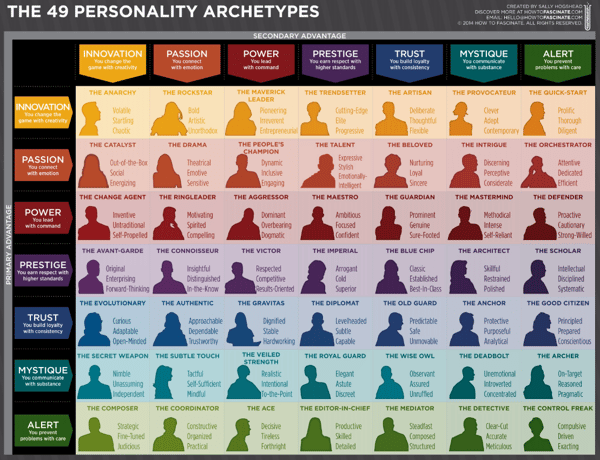Branding your business can be one of the most important decisions you make.
Your brand is how customers know you from the competition. It's your voice. Your character. And when you decide to change it, you may not be able to shake the personality you've created.
Mediocre branding damages your potential for high-quality leads. It gives your competitors the edge in their marketing. But worst of all, it means you're forgettable.
There's good news, though. With a masterful branding strategy, you can own your space. You can be the dominant player in your industry because customers want to be part of your cause. You can have a brand that won't be overlooked.
Website Grader
Diagnose Your Growth Blockers & Unlock Your Brand’s Potential
Pinpoint the sticking points in your website and messaging holding your brand back from explosive growth. Use our proven methodology to get data-driven strategy recommendations, strengthen your content, and boost SEO.
- Identify growth roadblocks and opportunities on your website
- Data-driven recommendations for scaling
- Strengthen content and SEO with actionable insights
Thanks for submitting the form!
Creating Your Branding Strategy
How consumers see your brand is going to change with the times. To keep your company consistent, it's essential to relook at your strategy quarterly. This will let you keep up with changes in cultural norms and trends of the year.
And when you do take another look at your strategy, consider these critical steps for setting your brand up for success.
1. Define Your Target Audience
Personas are living documents and can be altered as you collect more information on your target audience. Has your target demographic moved towards video rather than written content? Are they engaging with different offers more so than last year? With these details, you can adjust your target to meet their current needs.
With customer-centric marketing, the approach we recommend all businesses take, you're putting the consumer first and providing the content most relevant to them. It's not about squeezing the deal; it's about providing as much value as possible, so they overwhelmingly want to work with you. If you're not updating your buyer's personas, you'll have no idea how to actually make this happen.
And while you're finding better ways to provide value to your audience, you can focus in on what would make them trust you more. What would you need to do for them to lower their guard and be more accepting of your offers? You want them to be comfortable because you're looking out for their best interests as a customer. If your brand plants roots in that concept, you're going to see better results from your marketing efforts.
Bonus Reading: How to Create Buyer Personas for Your Brand
2. Create Your Unique Value Proposition
You should already have a unique value proposition, but by aligning it on a more personal level, you're able to humanize your brand and connect with customers.
This is why you need to tackle the updated personas first. Benefits should be presented in a way that actually speaks to your consumer's modern needs.
There is also the concern that other businesses are creeping in and stealing a portion of your audience. If you can fine-tune your UVP to show what makes you stand apart for the crowd, it'll be easier to continue doing so as your business ages.
The hard part is assessing your UVP from an objective point of view. You're attached to the brand. You want it to succeed. The way you see your UVP is entirely different from a potential customer does. Customer feedback and surveys can give you insights into how your brand is presented, and you can hone in on your UVP through specific questions.
It's important to know that, although your UVP is what separates you from the crowd, it doesn't have to be a static part of your brand.
Bonus Reading: How to Come Up With a Unique Value Proposition
3. Develop Your Brand's Identity
Your brand's identity is how the world sees you. It includes everything from how you present yourself, to which brands, experts, and celebrities you associate yourself with.
The first step in developing your brand's identity is creating a bible for your marketing team to work from. Having a single document that covers your logo, graphics presentation, diction, and anything else you deem necessary to your brand's personality keeps your voice consistent on all marketing channels.
As you're developing this personality, look through the content your audience engages with the most and find the common denominator. This can be used to establish a foundation for your brand's identity, and it's especially useful since it's already the material your audience connects with. You can do this for your written and video content, as well as imagery you use on your site and social media to find tremendous benefits.
Bonus Reading: How to Have Consistent Voice and Branding Across All Marketing Channels
4. Improve Customer Relationships
Relationships are founded on trust, which comes down to managing expectations.
If customers know that you'll help with their problem, they're more apt to bring them up. This leads to happier customers and gives you more awareness about issues with your products and services.
The goal is to frame your company in a positive light. This varies per industry and niche, but if you were thorough in your personas, you have a head start.
In more recent times, consumers have begun caring more about the causes a brand gets behind, rather than looking to them solely for a purchase. TOMS is an excellent example of how to do this well.
Showing your brand's charitable side is an opportunity to find what matters to your customers, and so long as it aligns with your mission, can drive further loyalty.
Like we mentioned with the brand bible earlier. Consistency is key to your branding. A new way to manage this is through the use of Chatbots. These tools can be programmed in various ways to engage an audience however you want them to. And while it frees up some of your team from answering questions, it also gives your customer immediate support and maintains that consistency you're after.
FREE GROWTH TOOL
Assess Your Growth Performance & Set Clear Goals.
Measure your growth performance and quickly identify the cause of friction in your buyer journey.
Thanks for submitting the form!
Bonus Reading: Why Content Marketing Should Be Trust Instead of Pitching
5. Select Your Channels
You audience wants to actually engage with you, not just have your products pitched to them. So, without considering where you want to market, you're leaving opportunities on the table.
What channels you use in your marketing strategy can determine how people view you as well. For instance, LinkedIn is a more professional network, great for capturing B2B leads and presenting your brand as a thought leader.
On the other end of the spectrum, Instagram can connect you with a B2C audience that wants to see a more human personality associated with your brand.
How you choose to engage matters specifically to your audience's needs, but be sure you're optimizing everything for mobile. A majority of your audience will check your accounts and site through their phone, and if you only present a clean image on a desktop, you're losing potential customers.
Bonus Reading: How to Build a Killer Social Media Strategy
6. Promote Brand Ambassadors
No matter your company's size, odds are you have someone who supports your brand. Having them promote your company through their own channels speaks volumes in modern marketing.
Employees should be encouraged to become brand ambassadors. Through their social accounts and in personal interactions, they should speak highly of your brand, sharing content, and promoting any campaigns you have.
The benefits of brand ambassadors range, but it's a great way to extend your influence. You can even consider hiring individuals with large social followings to do the job.
A potential downside to hiring brand ambassadors is that it connects everything they do with your brand. This means if they fall out of public favor, it could negatively impact your company. So be critical about who you associate with.
Bonus Reading: The 9 Fastest Ways to Build Brand Awareness Online
\
Maintaining Brand Consistency
To stay consistent, set goals for the long term. If you're looking at individual issues and pivoting before the situation has time to develop, you're going to suffer from irrational decisions.
At all times, keep your customer's needs in mind. The focus should be on them.
And finally, audit your brand more often than annually if you want to keep it continually fresh.
If you want more ideas on how to develop your brand, take a look at our free eBook. The Brand Character and Voice Workbook offers an editable and printable guide, real-world examples, and outlines to help you frame your character in a way that resonates with your audience.









